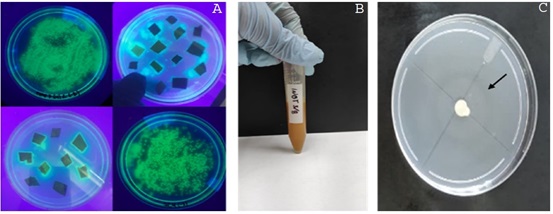Biochemical Characterization of Endophytic Rhizobacteria with Biocontrol Activity Against Phytophthora palmivora and Lasiodiplodia theobromae
DOI:
https://doi.org/10.28940/terra.v42i0.1807Keywords:
proteolytic activity, antagonism, lytic enzymes, cell extracts, siderophoresAbstract
The use of rhizobacteria has the ability to colonize the root system, promote plant growth and biocontrol or suppress phytopathogenic fungi. The objective of this research was to select and analyze fluorescent rhizobacteria solubilizing nitrogen, phosphorus and potassium, producing lytic enzymes with antagonistic activity towards P. palmivora and L. theobromae. The bacteria were isolated from root and leaf tissue of endemic CCN-51 cacao cultivars from the provinces of Los Ríos, Santa Elena and Esmeralda. Characterization of antagonistic activity was based on the selection of proteolytic activity, siderophore production and fluorescent pigmentation under ultra violet light. In addition, antagonistic activity was performed using cell extracts. Nine bacterial strains (BF 567, FZ 9-7, LH 5-10, MH 4-20, MN 5-20, MN 5-19, AC3, PV-25) with protease production, siderophore production and fluorescence emission were selected. The ability of the bacteria to solubilize complex minerals (nitrogen, phosphorus and potassium) was analyzed and their solubilization ef ficiency varied, ranging from 50 to 100 %. The antagonistic factor of cell supernatants from FZ 9-7, BF 567 and PV-25 inhibited mycelial growth toward P. palmivora and L. theobromae by 40, 60 and 85%, respectively. The use of rhizobacteria could be used as an alternative biofertilizer to chemical fertilizers and biological control of phytopathogenic soil fungi through their volatile emissions.
Downloads
Publication Facts
Reviewer profiles N/A
Author statements
- Academic society
- Terra Latinoamericana
- Publisher
- Mexican Society of Soil Science, C.A.

















